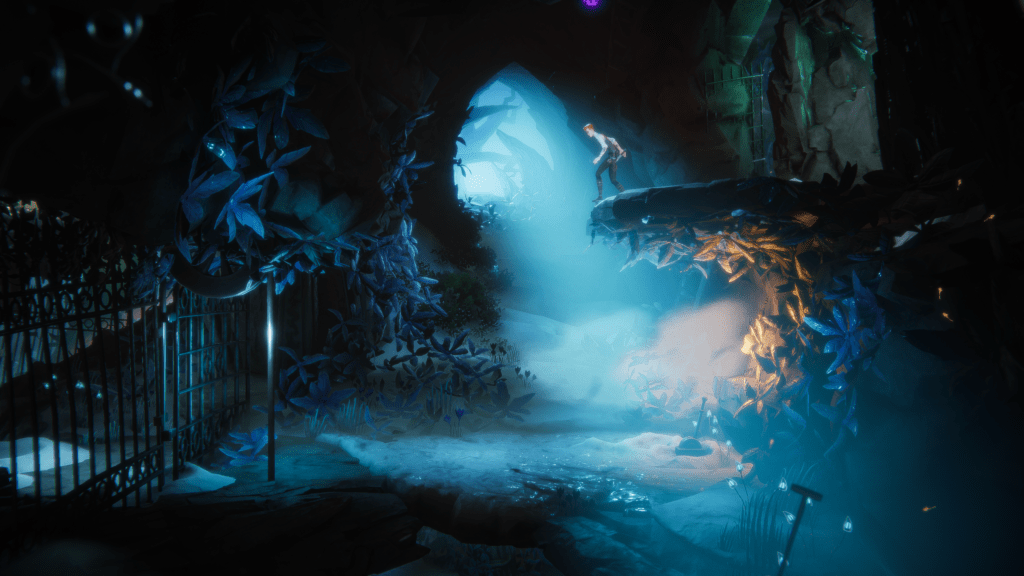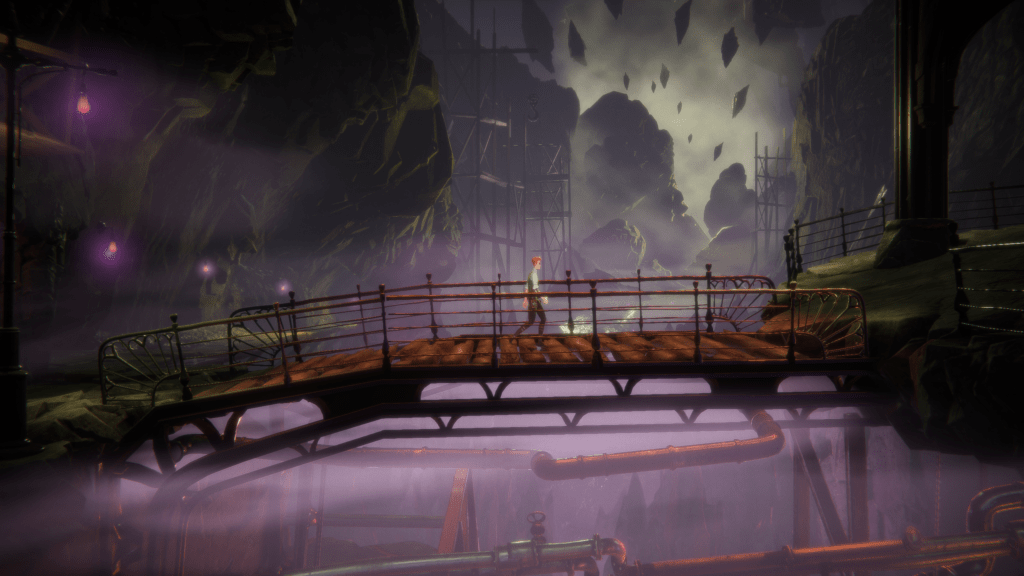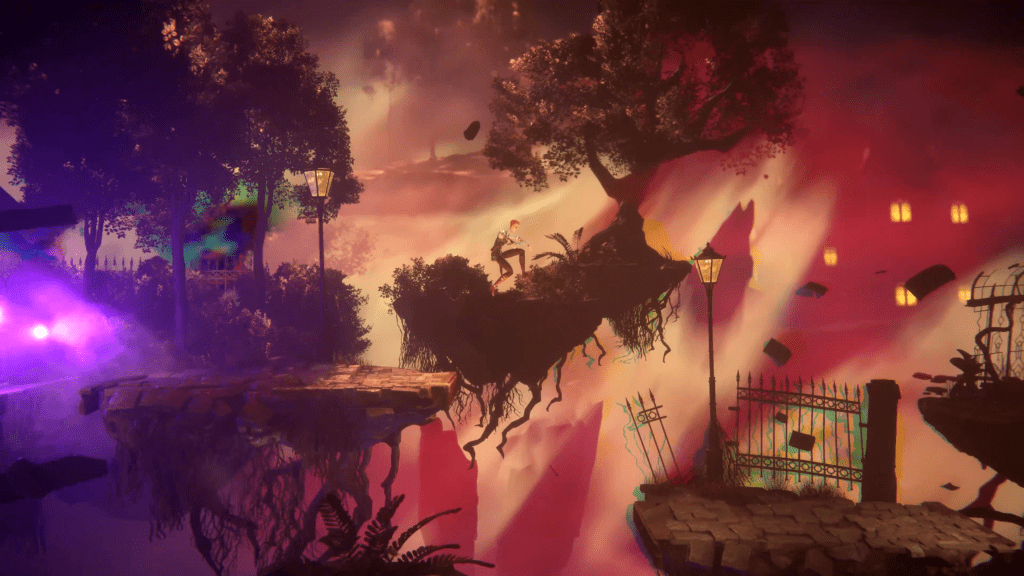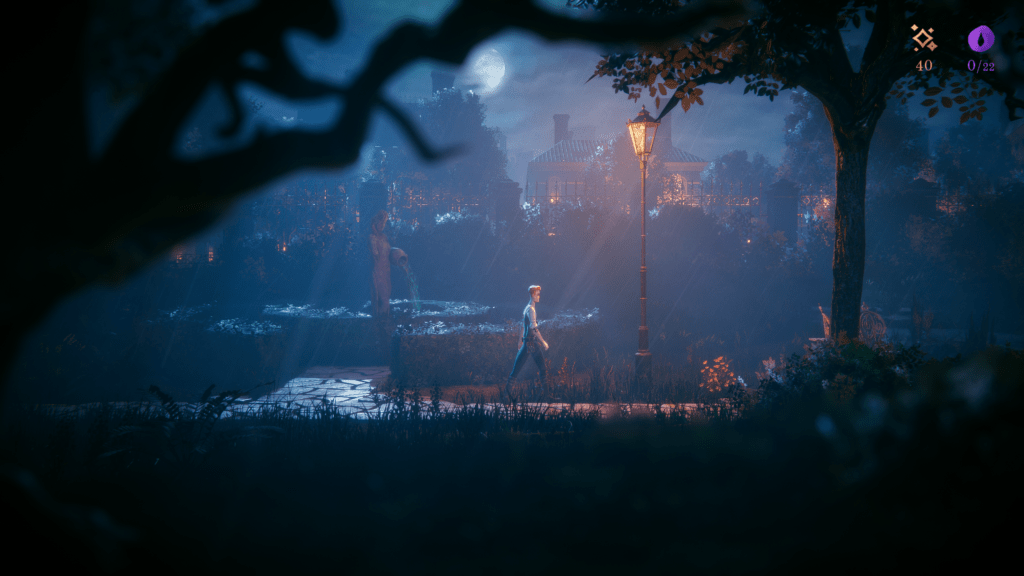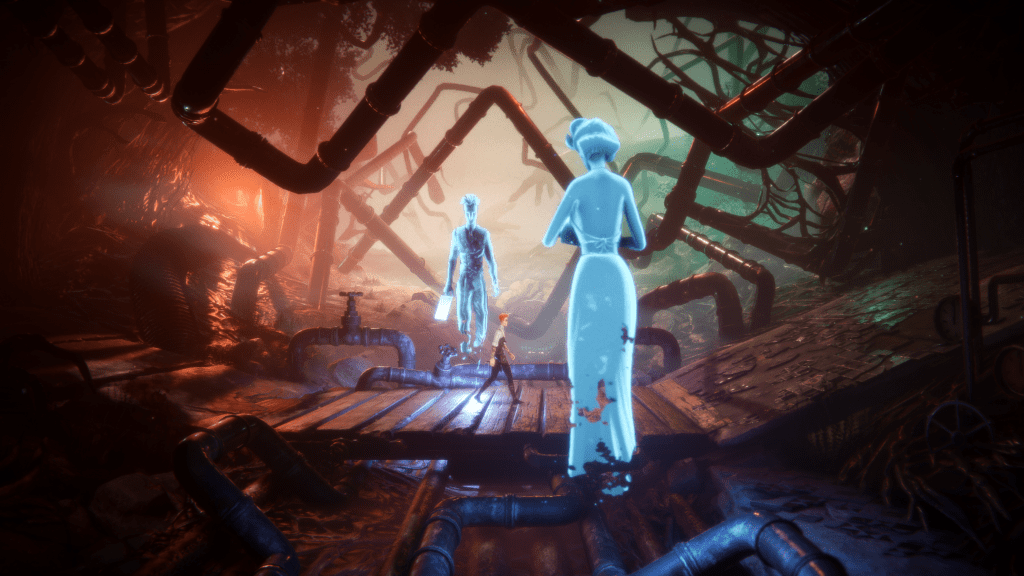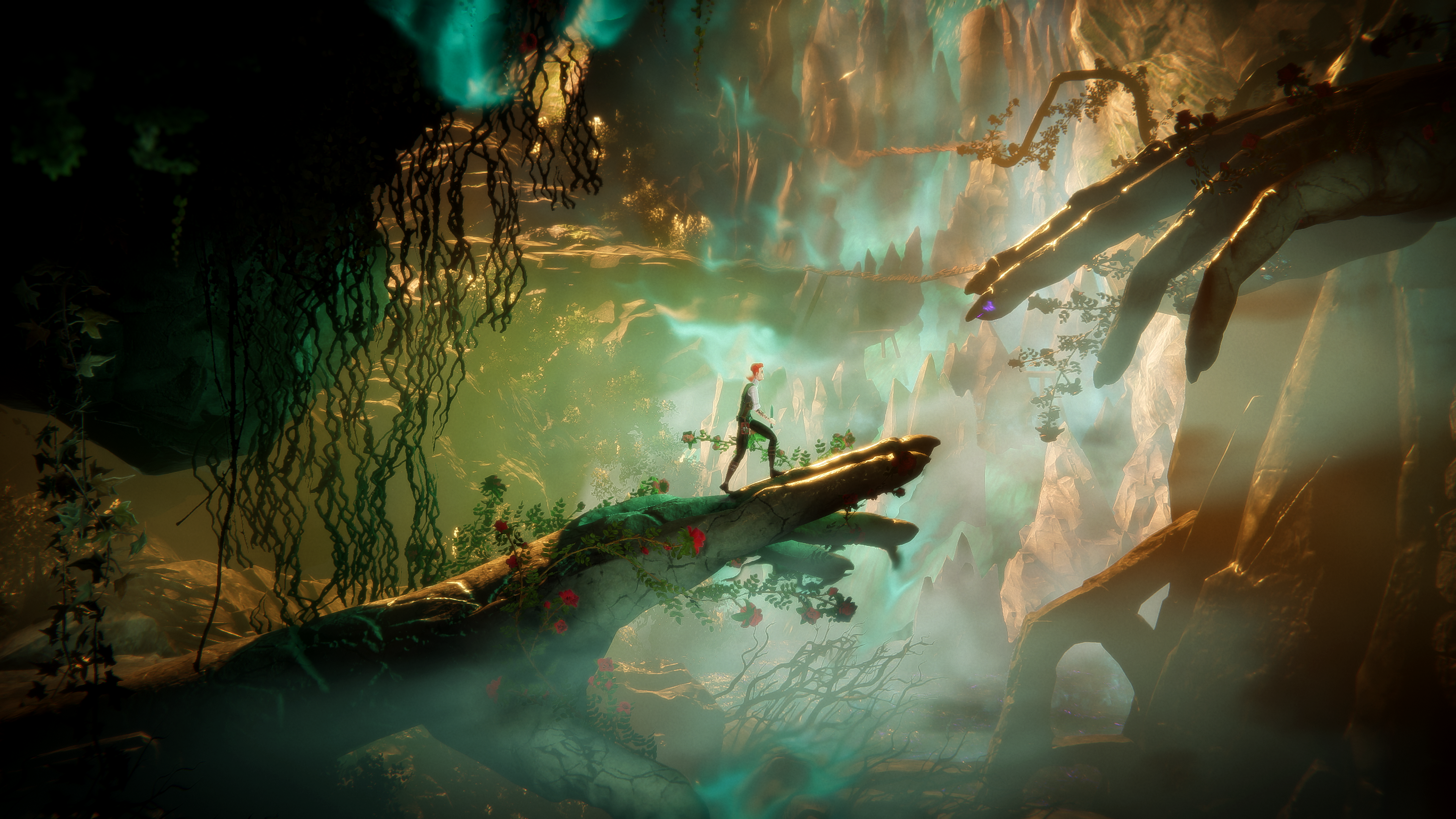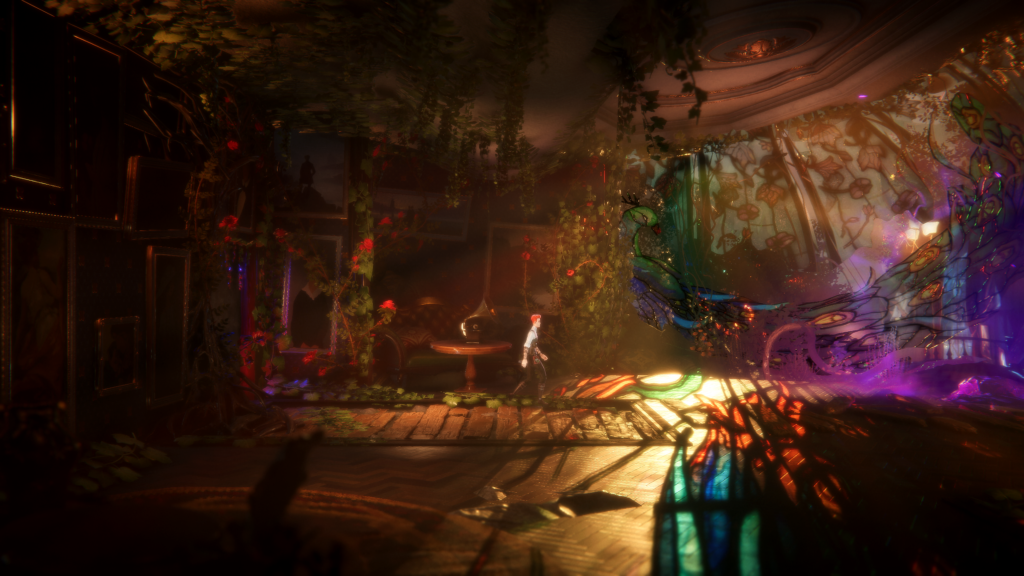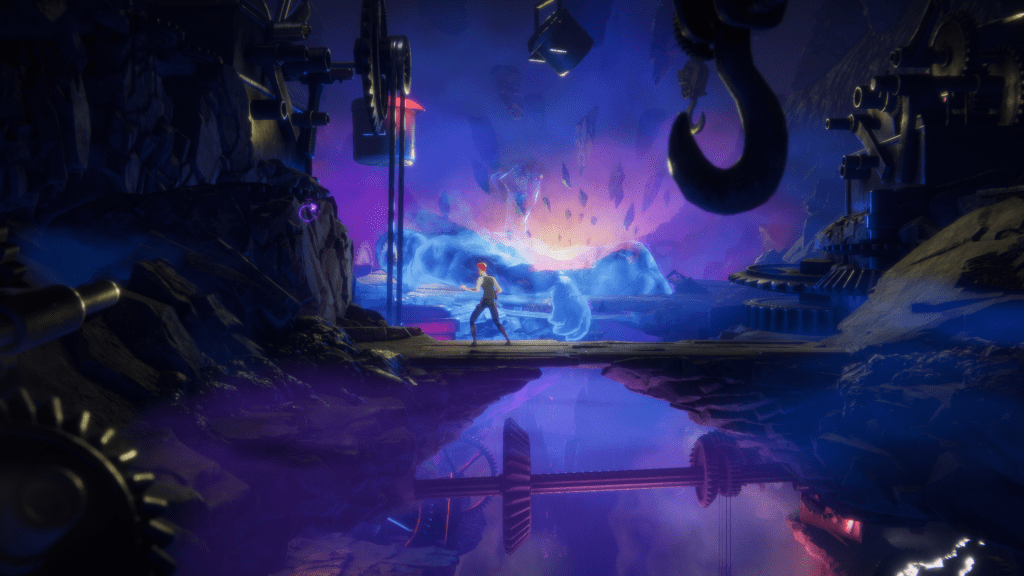You'll love it if:
- You are a Lovecraft fan
- You want to see a unique visual aesthetic
Not for you if:
- You enjoy fast and responsive combat
- You're not a fan of puzzles
- Area backtracking annoys you
- You prefer combat-oriented games
I have to be honest; I had this game dead to rights for a while before a review copy graciously fell on my lap. Not only am I an absolute sucker for Lovecraftian/Eldritch art aesthetics, but also the fact that this game would be a Metroidvania intrigued me to no end. Something about coming back to places you couldn’t access before and the ability to “undress” a game area from all of its secrets scratches an itch at the back of my brain that nothing else can alleviate. The tentacles, you ask? The tentacles were just a bonus.
So, this project, being a combination of more than one of my favourite videogame genres, should have created a special place in my heart for our dear protagonist Benedict Fox. But alas, mediocrity and glaring problems with one of the most important parts of any videogame, the gameplay, caused this experience to be bitter-sweet. And unfortunately, not in a good way.
All images have been taken either in game or from the games steam page.

TL;DR
The Last Case of Benedict Fox is an interesting game that fumbles and falls just before the finishing line. The game has a truly wonderful and unique visual aesthetic that brings the Lovecraftian element back to 1920s Massachusetts in an interesting way. Unfortunately, clunky movement mechanics and a barebones combat system make the gameplay borderline tedious. The sound design is adequate, but the soundscape variety is scarce at best and provides nothing unique. For the current price, I wouldn’t recommend it, and even at the sale price, I would only suggest buying it if you’re a hardcore Lovecraft fan that doesn’t care about its many problems.
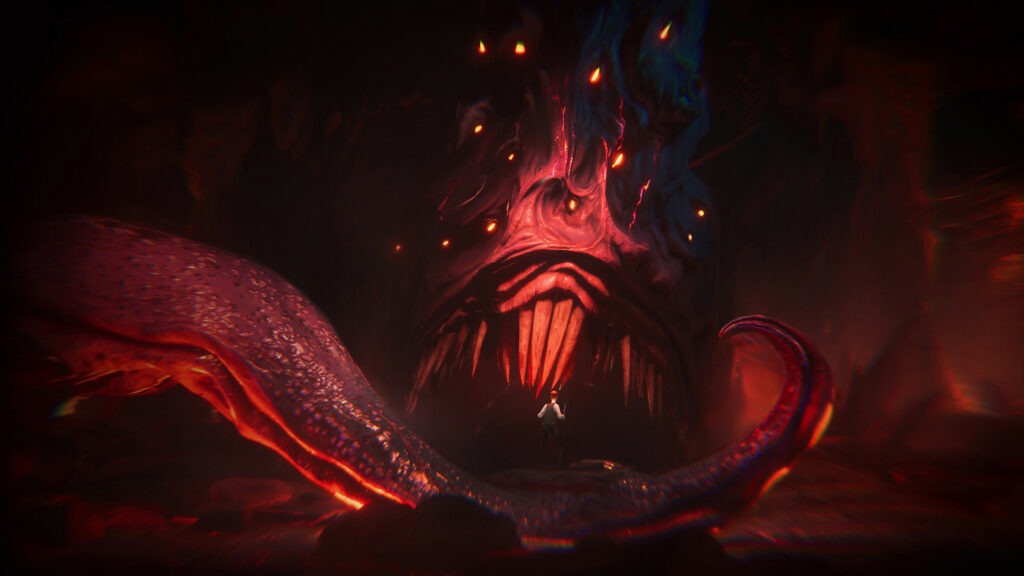
Story: Another corpse, another lead
You interact with the story as Benedict Fox. A young occult detective running from the pursuit of a secret society that regulates all supernatural powers called the Order during the 1920’s. The plot starts with our protagonist having to investigate one of the most interesting cases of his life. The interest pertaining to the fact that the two victims clearly had occult connections and projects ongoing, but also that one of them is Benedict’s long-lost father. With the help of your “companion”, an eldritch abomination haunting you, you must uncover the mystery of their death while taking into account that the Inquisitors belonging to the Order are still after you.
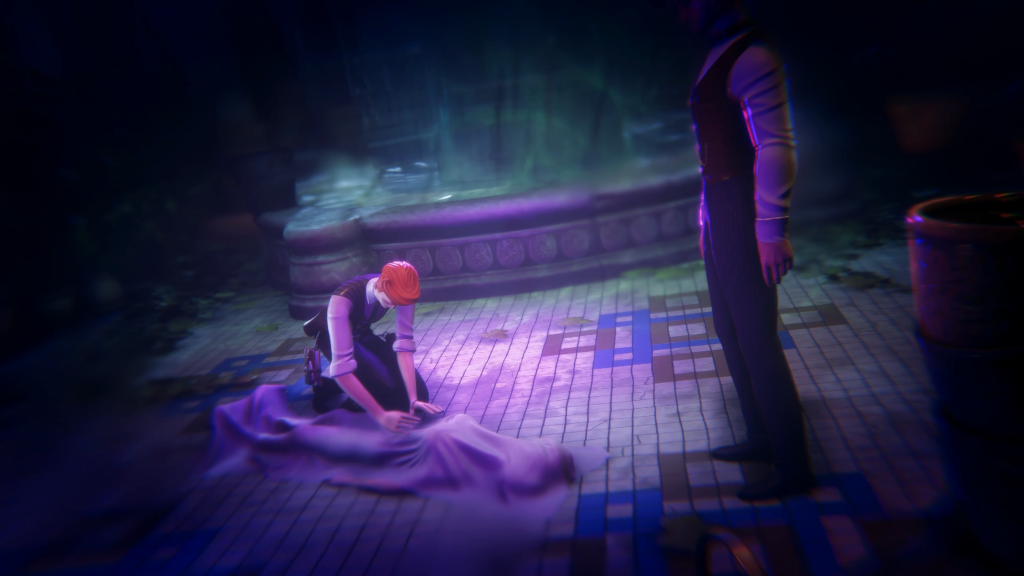
Clues can be found all around the Fox Mansion, but more importantly, in the victims of this case. No, I didn’t misspell when I said “in”. You see, with the powers of the companion, Benedict has the ability to enter the realm known as Limbo, using the dead as a catalyst. Each one of the victims has their own Limbo, and inside it, Benedict finds clues not only on the case but also on the life the couple used to have. Using these realms as a areas of exploration, the game expects you to get invested in the story and follow the clues to find the solution to the case.
If you’re interested in another Lovecraftian game then check out the Cult of the Lumb review for more tentacles.

Unfortunately, that’s not what happens. The story, for lack of a better word, is… well… background noise. It doesn’t evolve throughout the duration of the game, and it’s used mostly as a setting device than anything else. Bits and pieces of the past get uncovered, but annoyingly they don’t affect the present in any way, shape, or form. Benedict’s case is set in stone, and nothing happening through the game can change that.
The story is more dead than the bodies you have to dwell in for answers. The same goes for the characters involved. Most of them are there to serve a specific game function like item and ability upgrades. There is a spark of interesting personas under the shallow dialog but it gets buried by the fact that they have no other use than selling stuff and giving you quests that unlock specific tools for progression while the almost amateurish voice acting also contributes to making them way less believable.
Visuals: A world flawed yet beautiful
Don’t get me wrong, the Last Case of Benedict Fox is not a game beyond redemption by any stretch of the imagination. Nonetheless, the mediocrity I’ve faced until now would make this a deal breaker for me. Or at least that’s what would have happened if the game didn’t look so damn unique from an artistic perspective.
With body aesthetics reminiscent of Laikas Studios’s first claymation works, our protagonist has a plain but also disturbing facial appearance, mixing childlike character design schemes with cosmic horror seamlessly. Of course, that is also true for all the visually interesting faces that exist within the Fox mansion. All the friendly non-playable characters in The Last Case of Benedict Fox are fascinating and artistically memorable, contributing to the mystique that only 1920s Massachusetts can offer.
This doesn’t only extend to people, though. The game provides the ability to observe an item that Benedict pick up on his investigation, albeit only in a visual way. And they are a treat. Intricate artistic details on objects that have been used in sinister ceremonies or are occult in nature truly make you appreciate the dedication the art department put into the setting.

The Fox Mansion operates as a base of operations for Benedict and is the central hub of the game. It also is one of the most beautiful renditions of a house I have ever seen in a game. It is, for lack of a better word, picturesque in a way we rarely see in video games nowadays. From the noir aesthetic permeating the mansion all the way to the mist-filled gardens and the exotic greenhouse, the Fox Mansion looks absolutely wonderful. Not only does it feel lived in by its inhabitants, but it also provides a cozy breath of fresh air compared to the horrors Limbo has to offer. That dissonance between the two environments not only enhances the tranquility that the mansion has to offer but also reminds you about the strangeness that Limbo exudes compared to the waking world.
Which brings me to Limbo. Limbo is the place where Benedict explores for answers and clues in the aforementioned unsolved case. It is also the place where reality, the memories of the dead, and creatures of the great unknown all mix together in a perversion of the victims’ life. I want you to take some of your most painful and happiest memories, small bits and pieces that make you, well… you.
Personal items and environments that have molded you into what you are, and then I want you to mix them all together in an amalgamation of pure chaos and, as a final touch, add an ink-like organic substance that births almost-formless monsters. Do that… and you have Limbo in all its greatness. A haunting area that wonderfully completes the game’s whole Lovecraftian aesthetic and ties it up with a bow tie.
Gameplay: Tried and found wanting
As I said before, The Last Case of Benedict Fox may look brilliant, but unfortunately for Plot Twist Studios, we can’t judge only based on that. When having conversations with people about what the most important element of a game is, there are always three answers: gameplay, story, and visuals. And for me, the gameplay is the king. The interactions that the player has with the game and vice versa separate the medium from all the others. This element is where The Last Case of Benedict Fox, as the title suggests, has been tried and found wanting.
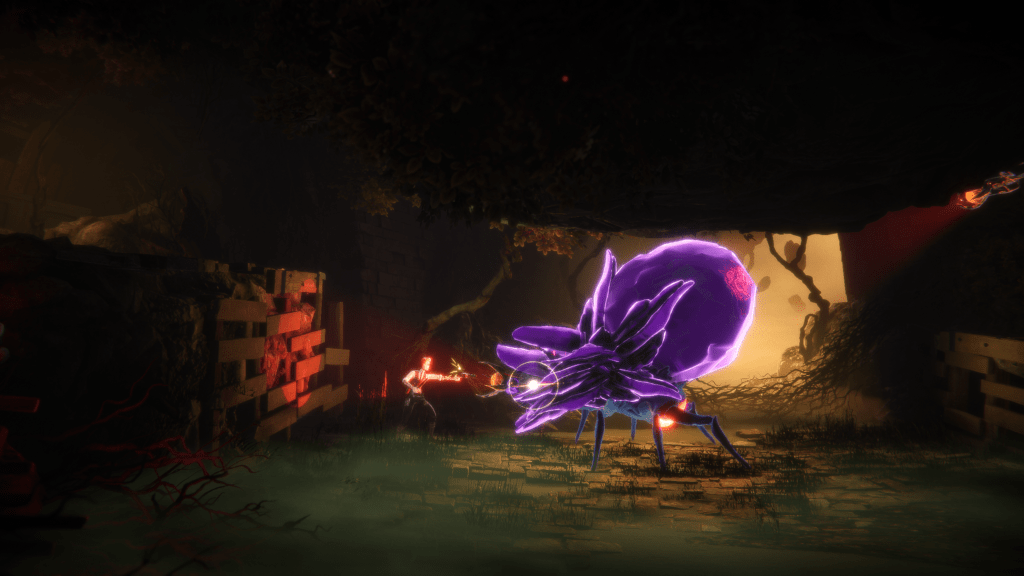
For all those that don’t know, Metroidvania is a genre of action-adventure games that focuses on, specifically, non-linear world exploration. If, for example, you happen to find a door you cannot break or a platform you cannot reach, the game expects you to progress with the exploration until you unlock the “punch” ability or find the item that allows you to double jump. It is expected of you to backtrack to places before though unreachable, with the expectations of unlocking something new. And here is where for me Plot Twist dropped the ball.
They gave so much attention to the exploration part, which, don’t get me wrong, is a wonderful experience, that they forgot they were making an action game. Benedict has two ways of attack: a melee bayonet with a short range and a pistol that needs to be recharged after every shot. The bayonet hits can either be light by tapping the button or heavy by holding it. Light is instant, while heavy needs a few moments of charging. For the pistol, nothing revolutionary, just point and shoot. The pistol shots are supposed to be akin to a special move since they can one-shot most of the non-boss enemies in the game and, last but not least, require a meter change that can only be refilled by hitting the enemies with the bayonet.
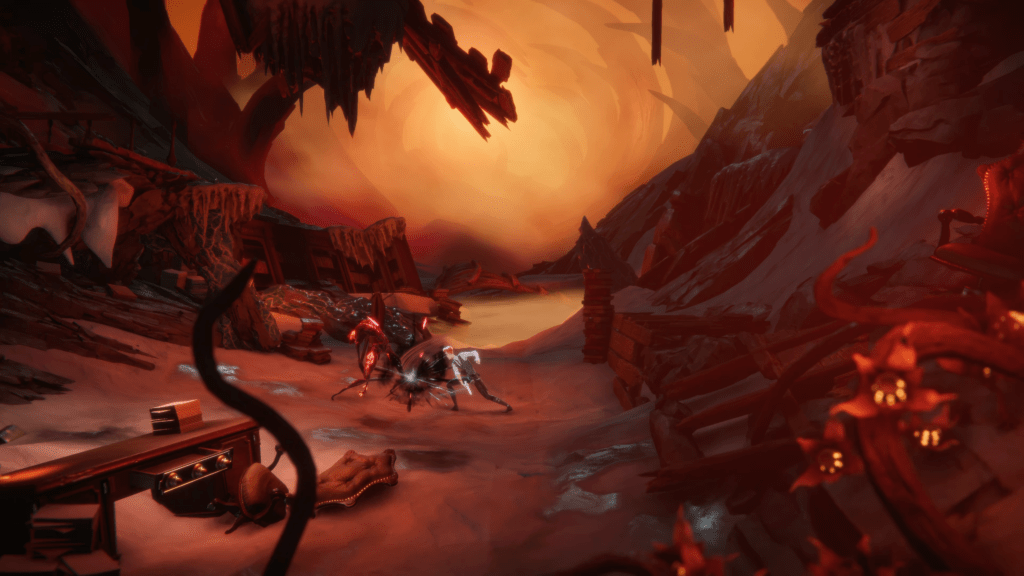
As I mentioned before, you also have your Companion to help you in the fights providing useful abilities that are eldritch in nature with awesome effects that decimate enemies with their otherworldly power. Or that is what would have happened if the Companion wasn’t god bloody awful. The only abilities that you get by having a Lovecraftian being of untold power inside your head have to do with displacing enemies, mostly lifting them in the air, and a block, which is nothing special.
I find this design decision baffling on many levels since this game gives Benedict almost no combat maneuverability. You can pull or push enemies with the tentacles, which has some use, but slamming them up or down serves literally no purpose other than you catching your breath since air slashing with the bayonet is finicky at best and clunky at worst.
Because of this and of the fact that the enemies, just like Benedict, have horrible ragdoll physics, most of the time, I just use the bayonet, the pistol, and occasionally guard. Now I can see the question forming in that pretty mind of yours “Doesn’t that make the combat system very plain and boring?”. To which I would answer, “Why are you yelling outside my window?” and “How did you find my home address?”. Joking aside, yes, it does. The only thing that makes the battle experience in this game smoother is that there are not many of them.

There are a few more options to make make the enemies’ interaction with Benedict a bit more controlled, and they come in the form of items. Items such as Miracle Water flasks for regaining health and the Stoneplate Device, providing a few seconds of invincibility, can help with restoring the tempo of a fight to one that you’re more comfortable with. The interesting fact is that these items are not consumables. For some reason, they operate on a Portal basis.
Portals are the fast travel stations Benedict uses in the Limbo and the Mansion. So you can only use Miracle Water so many times before you run out and have to walk or teleport back to obtain more of them. Unfortunately, they don’t offer substantial changes to the gameplay, and I didn’t use anything else except the Healing Water flask for most of my game time. Except for the healing, they are, for all intensive purposes, inconsequential.
On the other hand, I did love the puzzles this game has to offer. Benedict has to go through a variety of riddles and puzzles to solve the mysteries that Limbo and the Mansion have to offer. They are medium to easy on the difficulty scale, enough to make you think hard but not to frustrate you when trying to solve them. The Conundrum puzzles especially really immerse you in the story and setting of the game since they combine occult symbols and numerics not only to create a unique challenge for the player but to also make them feel like they are delving into forbidden knowledge.



Sound: Nothing from the great beyond
While the game dropped the ball in the gameplay category, when it comes to the sound, the ball fell, hit the game’s foot and then forced it to fall on the floor face first. We have virtually no music when it comes to The Last Case of Benedict Fox. Except for a radio and a gramophone that exists within the mansion playing a song or two, the entirety of the game has almost no background music to speak off. Now don’t get me wrong, just because a game chooses to have no music, that doesn’t mean that its soundscape is inadequate. Silence can be used to build tension and also elevate the sounds that we do hear, but unfortunately, not in this case.
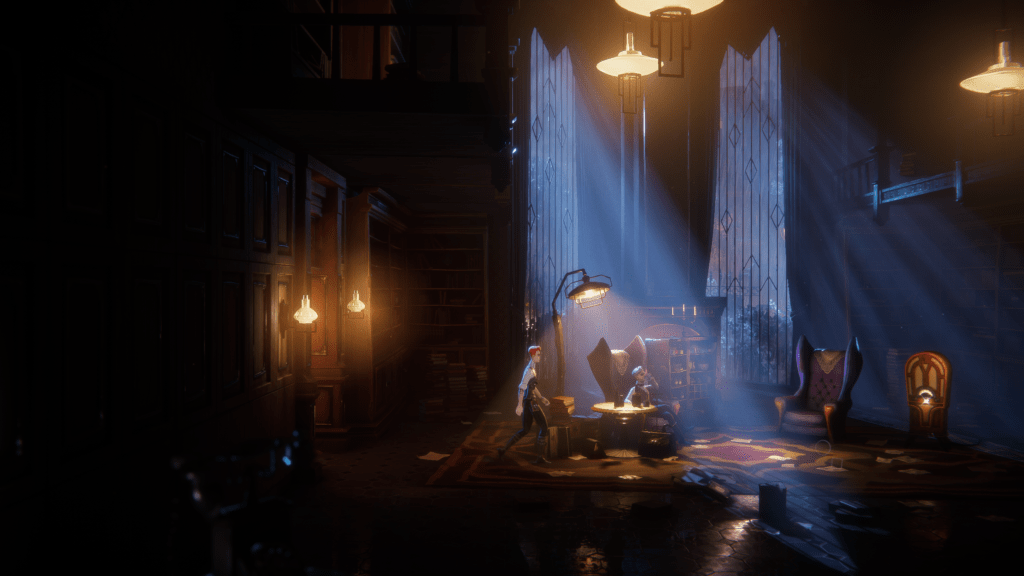
The Last Case of Benedict Fox doesn’t provide enough tension to the player as to make the silence more suspenseful in any way. To make matters worse, the ambient sounds getting distorted just because you chose to fire your weapon and had to go into slow motion really breaks the impression by forcing you to experience the sound equivalent of going underwater every few seconds.
Last but not least, we have to talk about the voice acting. The Last Case of Benedict Fox has one of the biggest cases of variation in voice acting I have ever seen. On the one hand, you have the Companion’s voice, portrayed by Craig Hustler. It is a wonderfully hair-raising performance that makes you feel like you’re listening to a creature that just barely has the human anatomy to express speech. Its lines are stretched and almost palpably wet with how it savors its ability to share knowledge with its host.
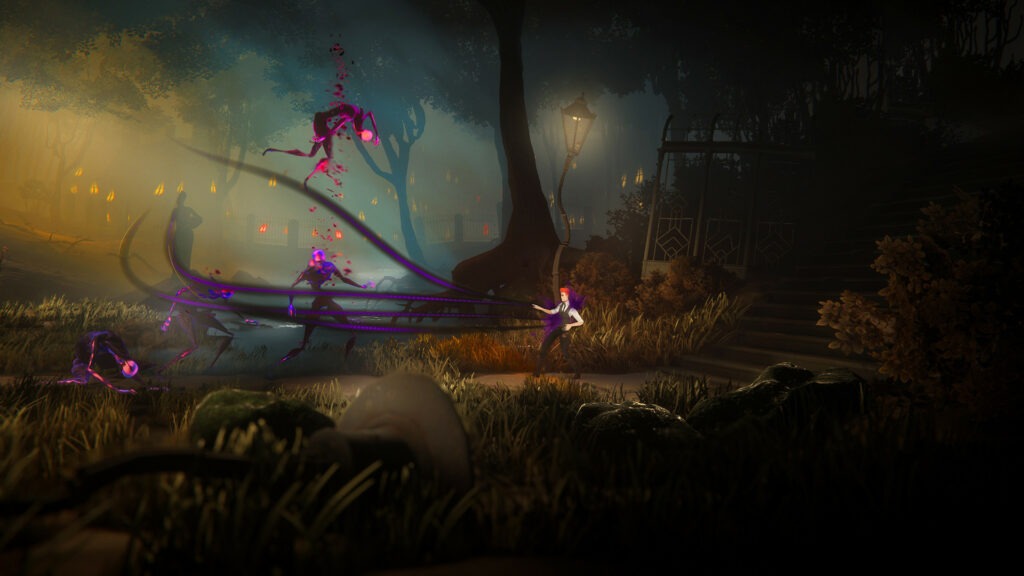
On the other hand, we have Benedict. Our protagonist gives us the most deadpan performance I have ever heard. No emotion is expressed except mild interest, which would be fine if it wasn’t used as a reaction to even his own freaking death and resurrection in the Limbo. This also extends to all other characters in the game except the Companion. It truly feels like they just grabbed whoever was in the office that day to do a bit of voice acting. As a result, the character soundscape this game has to offer is mediocre at best.
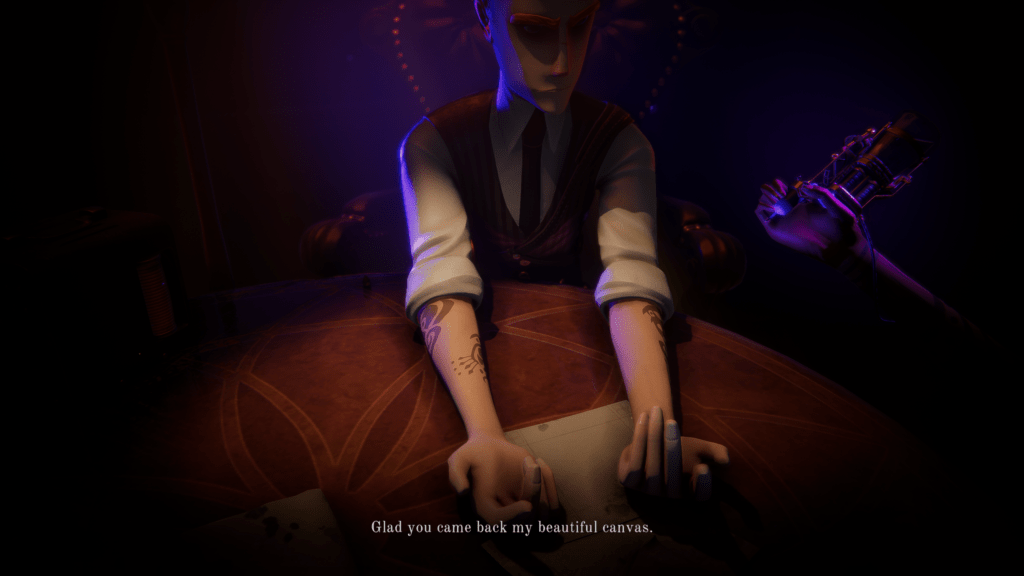
Conclusion: A hit and a miss
I enjoyed the art and visuals this game has to offer; I really did! But as you and I know, a game is not just its looks but also its substance, and The Last Case of Benedict Fox lacks exactly that… substance. From a small studio that recently made mostly mobile titles, I have to give credit where credit is due and say that as an attempt, they deserve my respect. Sadly the end result is not adequate enough to be called anything else than a below-average game with some really good undeveloped ideas. For the price of 24,50 Euros at the point of me writing this review, I would definitely not recommend it until it goes on a reasonable sale.
Last but not least I want to thank Plot Twist games for generously providing me with a free copy of this game.

